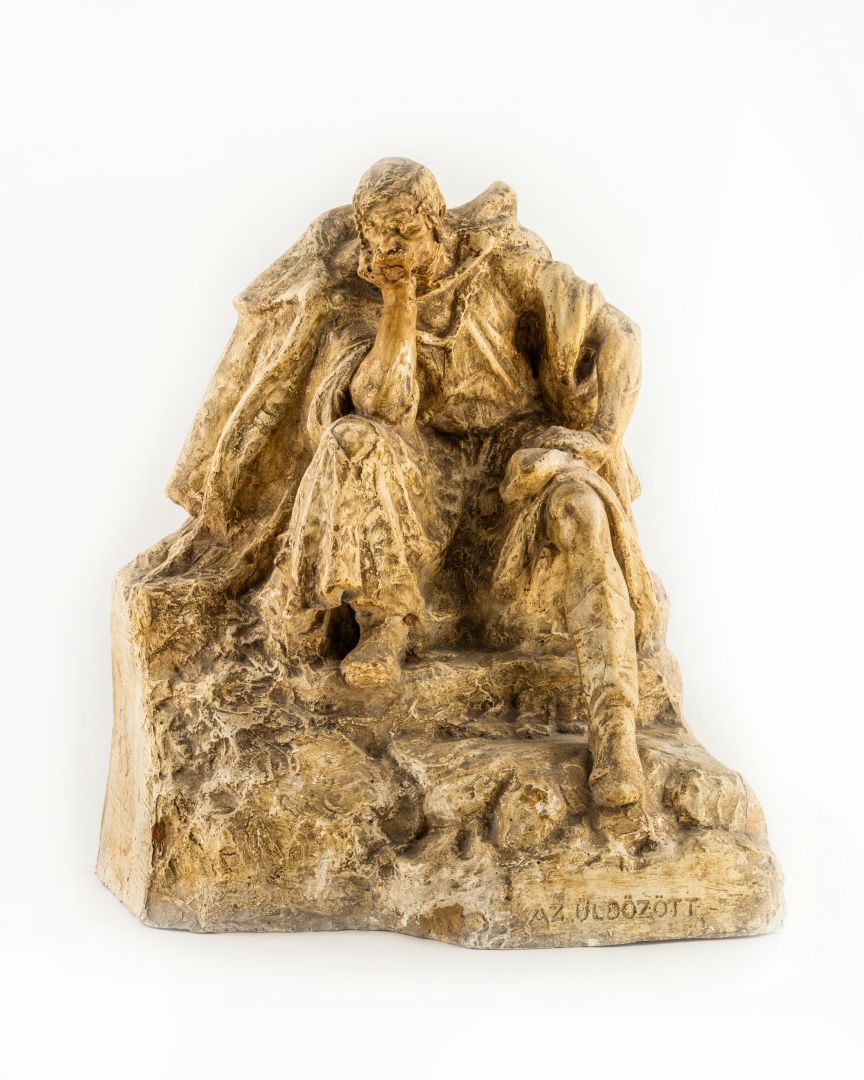Hall 3 - 2. view
Persecuted (Tiborc) (Sketch for the Tomb of József Katona)
SIKLÓDY, LŐRINC (1876–1945)
Persecuted (Tiborc), (Sketch for the Tomb of József Katona), 1929
patinated plaster, height: 43 cm; marking at the bottom left: Ditrói Siklódy 1929; inscription on the bottom right edge of the base: AZ ÜLDÖZÖTT (Persecuted)
Fine Arts Collection, Inv. No.: 2001.23.
Siklódy was from Gyergyó, which was an area in Transylvania where Hungary’s only quarry that produced marble suitable for sculpting was located. The artist was proud of his homeland and origins and even referenced both by adopting the additional first name of Ditrói. Lőrinc Siklódy was from the generation that was able to study fine arts locally, within an institutional framework. Burdened by both World Wars, this generation was seldom offered tasks for public monuments. The few tasks available were usually for military memorials or religious artworks requested by the Church.
He created the Statue of National Labour (1943) on the Republic Square in Budapest, which was demolished in 1955. Nearly all of his other public sculptures suffered similar fates. Out of his legacy from his studio at Százados street, only a handful artworks that were originally intended for private use became public property.
Siklódy was able to achieve professional fulfilment in the creation of figurines and statuettes. These life models showcase the good observational skills and humour of the creator and carry the stylistic elements of the ever present national romanticism. The two sculptures held in the museum’s collection titled Petur bán (Inv. No.:2001.24.) and The Persecuted are also characterized by such empathy. The two sitting figures can be considered to be each other’s companion pieces, since, even though each is tormented by different troubles, both are depicted as grieving and inwards facing characters. It is also possible that these two are different interpretations of the same idea. The sculptures were sketches made for the tomb honouring the 100th year anniversary of the demise of József Katona, which he designed in collaboration with Ferenc Márton for the call made by the town of Kecskemét. The two had won, which resulted in the creation of the final sculpture, which along with some well-designed architecture, represents the tomb of József Katona since 1930. The life-size bronze figure is the character of Bánk bán, who is sitting on the steps of the tomb. His depiction is slightly exaggerated, but the overall posture is appropriate for the author of the first Hungarian national drama.
The sketches maintain the freshness of the original idea. Here, the artist does not get lost in the details and allows the viewers’ memories and imagination to fill in the gaps. Out of the two statues, the Persecuted feels more expressive.
The artworks were acquired by the museum through both donations and purchases in 2001, from family members living in Miskolc taking care of the legacy.
Gertrud Goda
(In: A Herman Ottó Múzeum Képtára. Edited by: Andrea Pirint. Miskolc, 2004. 139. Cat. No.: 149.)
